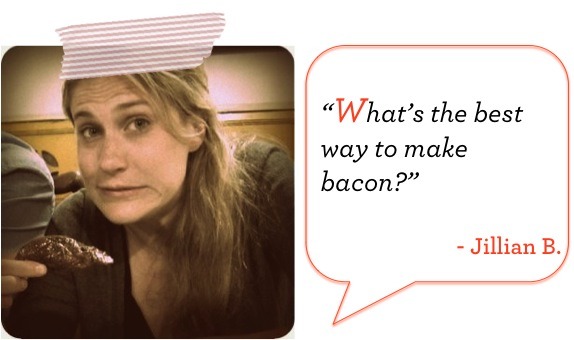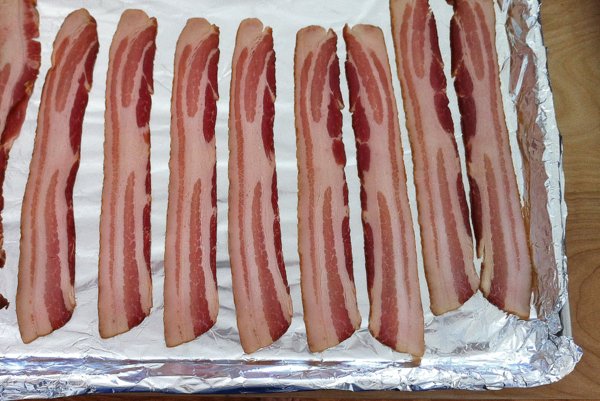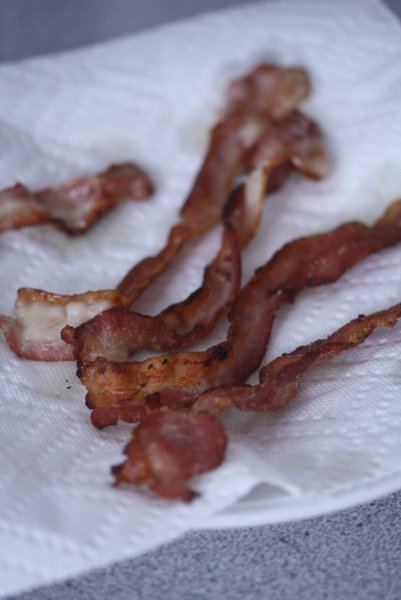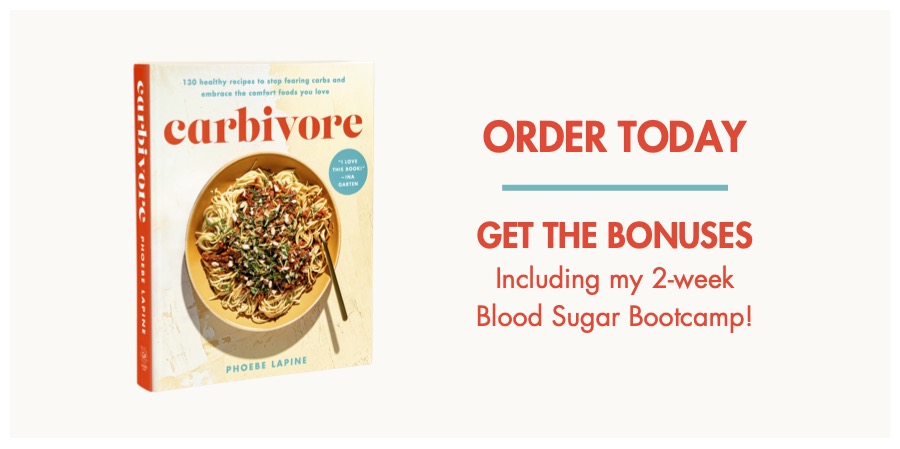
Jillian B. is a 4th year medical student living in Baltimore. Due to her lack of income, cooking at home provides her only form of sustenance. She is always looking for new ways to creatively prepare whatever weird stuff was on sale at Safeway. These days she spends her time outside the hospital tending to her small herb and tomato garden.


Let’s go over the two methods, as well as the pro’s and con’s for each.
Bake
Method: Preheat the oven to 375 degrees F. Line 1 or 2 baking sheets with foil. For best results, arrange the bacon strips on a wire rack in an even layer. I don’t own a rack and have never had a problem without it. If you’re rack-less like me, just arrange the bacon strips directly on the foil. Stick the pans in the oven while the oven is preheating, the bacon will only benefit from coming slowly up to temperature. Bake in the middle of the oven for 15 to 20 minutes. The bacon will render a lot of fat and it will begin to bubble on the surface of the meat. Once the bubbles begin to subside slightly, you know you are getting close.
However, I just go by color. The texture of the strips will firm up as they cool, so it’s really a matter of how crispy you like your bacon. If the answer is “very,” you can wait until the bacon gets deep brown all over. If you like it more pliable and chewy, you’ll want to remove the pan when it’s light brown and still has that pinkish bacon-y hue. Allow to cool on the rack for 5 to 10 minutes. If rack-less, remove the bacon slices to a plate lined with paper towels to cool.
Voila. Bacon ready to accompany your eggs, crumble over salads, or inhale as is.
Pro’s
- Great for a crowd. You can make one or two sheet pans worth – about one pound, or two packets of shrink wrapped bacon at the grocery store.
- There’s very little clean up. Carefully remove the tin foil without spilling bacon fat all over your kitchen and your pans are good to go.
- Fill the house with the perfect bacon scent. You’re containing all the smoke and fat in the oven, so while there will be an intoxicating scent coming from the kitchen, your curtains won’t be reminding you of the bacon you ate last Sunday for weeks to come.
Con’s
- It can take 30 minutes before you have perfect bacon to serve your guests.
- You have to turn on the oven. If it’s a hot summer morning, you may not want the added heat in your apartment or home.
- It’s harder to save the fat for later.
Fry
Method: Place a large heavy cast iron skillet over a medium-high flame. Arrange the bacon strips in an even layer – you should be able to get 4 or 5 in there depending on the size of your pan, about ¼ pound. Cook the bacon until brown and crispy on the first side, about 2 to 3 minutes. Flip the bacon and cook until crispy on the second side. The meat will release a lot of fat. If the bacon begins to burn, as it might if there is a lot of fat in the pan and the temperature is too high, turn the flame back down to medium and watch the bacon closely. Remove to a plate lined with paper towels to cool. Reserve the fat for another use, or pour out some of it and make hash or fried eggs right in the pan.
Pro’s
- It’s quick. You don’t need much foresight to get bacon on the table in a matter of minutes. Simply get out your pan and fry away. The baking process takes a lot longer.
- You can use the fat to add smokey goodness to any other part of your meal. Use a tablespoon to sauté up some spinach later that night. Or leave a little bit in the pan for your breakfast potatoes or eggs.
Con’s
- You can only fit so much in the pan.
- It’s messy. Consider the bacon fat that may be splattered all over your stove-top.
- Your curtains may smell like bacon for weeks.
Verdict
In terms of taste, I think both methods produce delicious bacon. It’s just a matter of cooking it to your desired texture, which may take some trial and error on your end. Because it’s more of a gradual process, baking your bacon might yield less error. But if you do mess it up, it will take a lot longer to start over and try again. If you’re experimenting on the stove, you’ll want to pay attention. Don’t wait until you have a crowd of hungry guests (or one pestering loved one) standing around looking over your shoulder. No matter how you cook your bacon, I know you’ll enjoy the results.
Happy cooking!
Xo
Phoebe



I tried the baking method and never looked back (though I don’t use tin foil). I would like some advice on how not to eat the entire package myself.
sorry, i too am a weak weak woman.
another oven pro: bracelets decorate your wrist much more nicely that bacon fat splatter-induced scars!
haha! I take it you have a non-removable bacon fast bracelet? oven all the way! xo
and the scars only serve to make me hungry! equally cruel and disturbing…